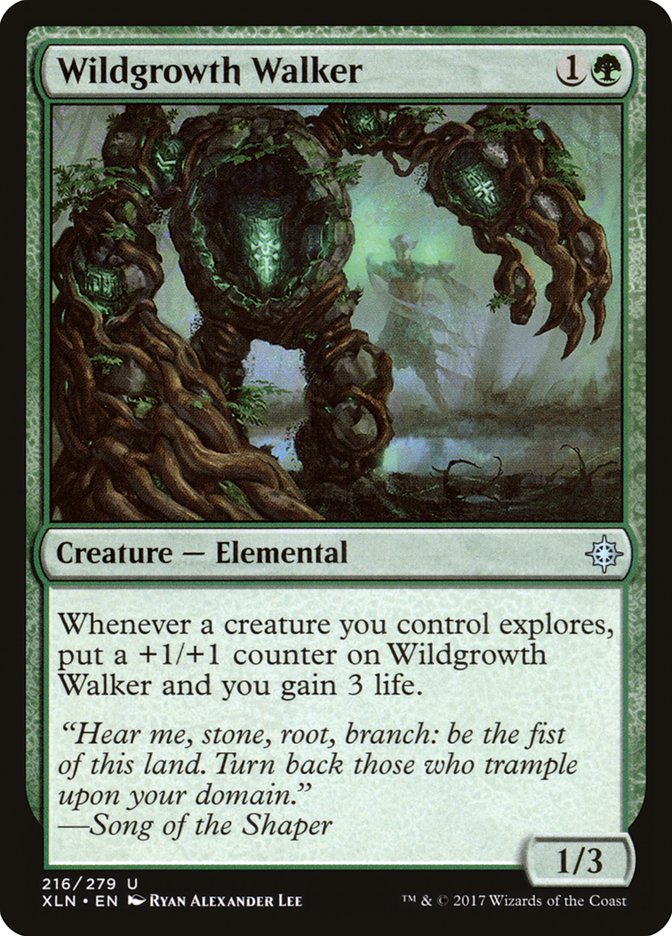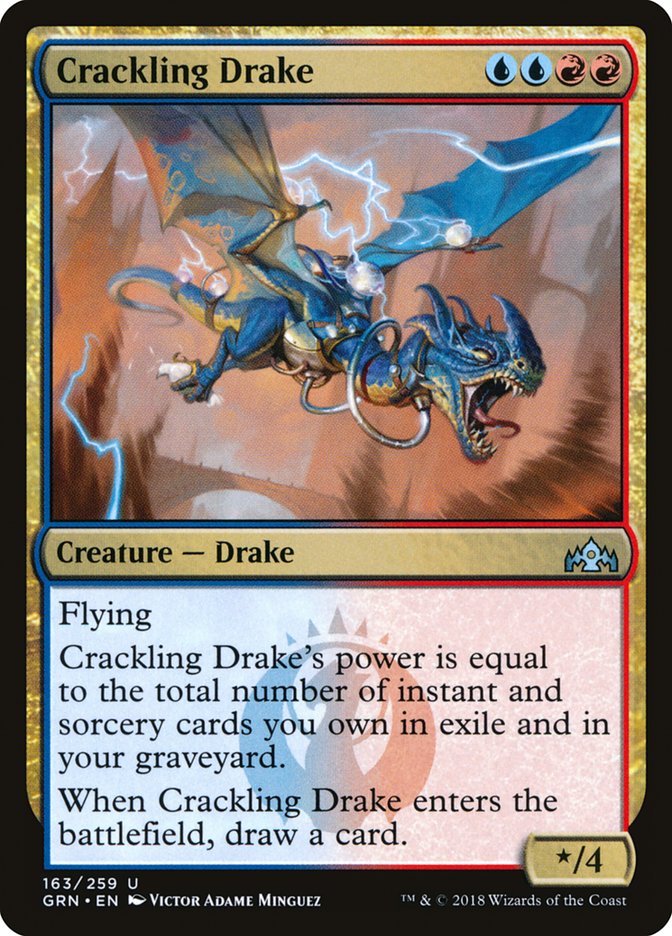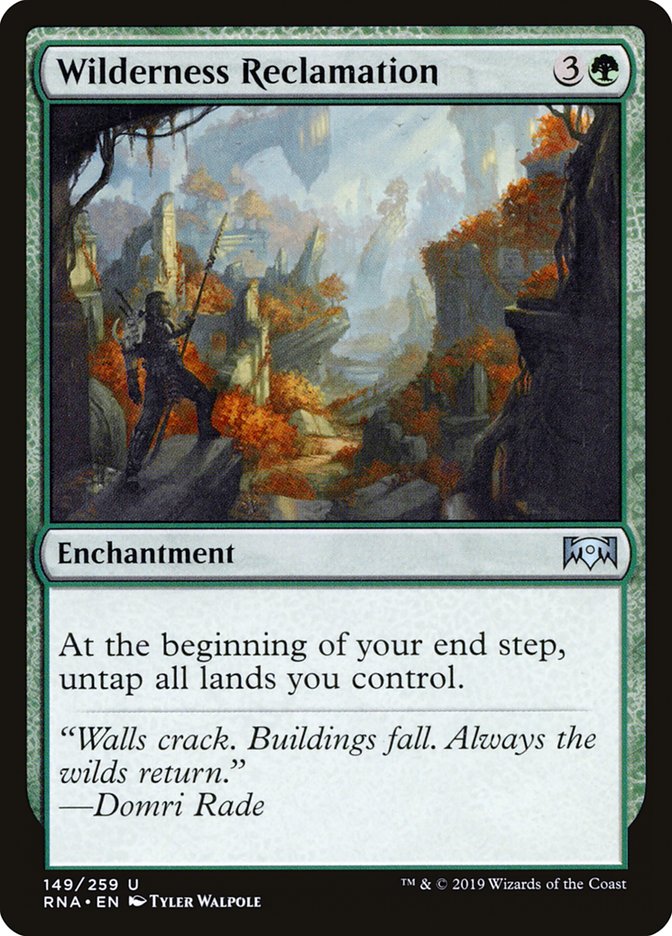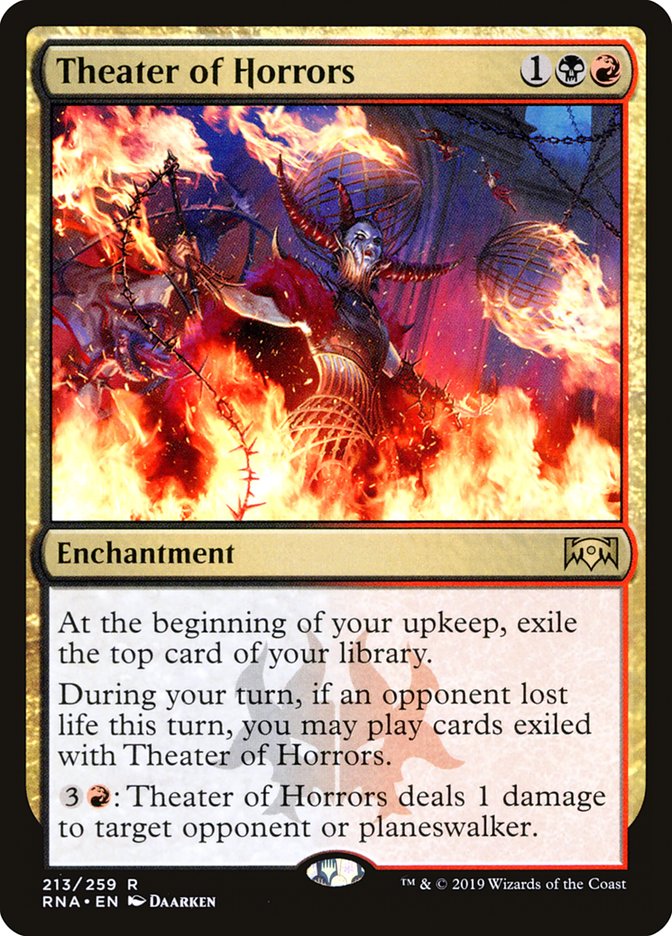There’s no time in Magic as exciting or as terrifying as week one of a new
Standard format. It’s the point in the format with the most viable decks
and the largest potential for discovery. This implies that it’s critical to
spend your time wisely. Every league you enter, every card you test, and
every decision you make must have the specific goal of optimizing returns
on your time.
Goals
As the format develops and the metagame becomes defined, it’s sometimes
advantageous to play underpowered decks looking to exploit a hole in the
format. Week one of a new Standard format is neither the time nor the place
for that. With everything so nebulous, your goal is simply to identify a
deck with enough raw power to crush everything in your way.
If the deck you identify even reaches tier 2 status in the endgame of that
Standard format, you’re in a great position to win the first tournament. To
give you a sense of this, at SCG Columbus last year, immediately following
the release of Guilds of Ravnica, my teammate Max McVety played
Mono-Red Aggro featuring Experimental Frenzy. We finished in the top 4 of
that Team Constructed Open, in no small part thanks to Max’s excellent
record in Standard. While the deck certainly didn’t dominate, for that
singular tournament it felt broken. Golgari Midrange basically didn’t exist
yet and even the rare opponents who played it had heavily untuned lists
with many choices that would seem laughable today.
During week one of a new Standard format, you don’t need the best deck. You
don’t need a well-positioned deck. Any good deck will do.
Assembling Your Gauntlet
This early in a format, the major decks are nowhere near defined, and real
results are extremely hard to come by. Because of this, more of your
gauntlet must come from writing rather than result. Content creators are,
on average, reasonably good at Magic (if I do say so myself). When everyone
in the world is writing about Judith, the Scourge Diva, you’d better be
ready for some version of The Aristocrats. You can also mix in some of the
decks from Magic Online which are just starting to trickle in. But at this
stage, it isn’t going to be possible to test every conceivable variant of
every conceivable deck. You should settle for testing against one of each
of the major archetypes to maximize the value of your time. You cannot
afford to waste time testing against Jeskai Control and Esper Control. Only
include one popular control deck and ignore the rest. If you end up facing
some variant, you can likely adapt your control plan on the fly. For this
current Standard format, my broad gauntlet looks like this:
- Judith Aristocrats
- Hydroid Krasis/Growth-Chamber Guardian Midrange
- Teferi, Hero of Dominaria Control
- Gruul Rhythm of the Wild
- Mono-Red Aggro
- Bant Nexus
Don’t Sweat the Small Stuff
If you’re testing a Standard format that has been around for months, most
of the big questions have already been answered. You already know that both
decks involved are finely-tuned killing machines and that their sideboards
contain powerful answers to real strategies that fit well into the decks’
main plans. As a result, when you’re testing, you’re usually trying to
answer some specific question such as…
“Is the Wildgrowth Walker sideboard plan effective against Izzet
Drakes?”
This lets you hone your testing like a scientific experiment — control
every factor except one and observe the results.
Week one of a new Standard format isn’t like that.
Many of the decks you’re testing will need to be completely abandoned or
re-imagined from the ground up. Many of your sideboard cards won’t be good
in the matchups they’re intended for or be completely incompatible with
your deck’s plan. Many matchups will be about things you never thought
would be relevant or cards you thought were unimportant.
As a result of this uncertainty and the limited time frame, it’s critically
important to iterate faster. Be more willing to generalize from
small samples, drop decks from consideration entirely, or change cards
after only a few games. You typically won’t know if either of the decks in
a given match will be around in a month, so don’t worry if half your games
with Rakdos Aristocrats feature the Gruesome Menagerie package while the
other half don’t. You’re mostly just trying to discern if your plan is
effective against theirs and if your deck is consistent enough to be
playable.
don’t need the best deck. You don’t need a well-positioned deck. Any good
deck will do.
The amount of space you need to explore also means that you should take
every measure possible to save time. If you’re testing a sideboard card,
make sure to start it in your hand. If you’re testing a matchup you know
will be awful game 1, don’t even bother with pre-sideboard games. Eke every
ounce of value out of your extremely limited test games.
All of this will slightly reduce the validity of your data and might make
you wrong about small things. But it will help you establish the big
picture quickly, and that is far more important early on.
Identifying Lynchpins
Very frequently there exist decks that hinge on drawing some specific card.
If you can identify such a card, it will usually allow you make a ton of
deductions very quickly. If you plan to play a deck featuring such a card,
you should do everything you can to ensure your deck can win games without
it or find it more frequently. If you’re playing against the deck in
question, you know exactly what card to attack to make its strategy tumble
like a house of cards.
In Ravnica Allegiance Standard, the deck with the most prominent
lynchpin is Bant Nexus. Its lynchpin, Wilderness Reclamation, is an
obscenely powerful card, but the rest of their strategy is often
underpowered and exploitable. I’m highly unlikely to play Bant Nexus this
weekend and the reason is simple – I do not know yet how to make the deck
hum when Reclamation isn’t on the battlefield. While cards like Opt and
Anticipate can improve your probability of finding it, I think the card
selection in Ravnica Allegiance Standard is weak enough to not
fully address this problem. If you have already cracked that particular
code, you might just have a great deck on your hands.
Sideboards
The average sideboard for week one of a new Standard format looks like
this:
- 4 Difficult-to-Answer Threats for Control
- 4 Removal Spells for a Known Problematic Permanent
- 4 Lifegain Spells for Mono-Red
- 3 Generic Good Cards you couldn’t fit in your maindeck
The problem with sideboards like this is that they don’t consider how these
specific cards fit into the context of your deck’s larger plan. It’s
typically better to play a weaker card that synergizes with your deck than
a more powerful one that dilutes it.
For example, in Ravnica Allegiance Standard, I have seen some
lists of Rakdos Aristocrats sporting Experimental Frenzy in their
sideboard. This is a huge mistake, as Midnight Reaper and Priest of
Forgotten Gods mean that your deck draws a huge number of cards even into
the lategame. This makes Frenzy’s downside far more relevant here than in a
deck like Mono-Red Aggro. As a result, if your Aristocrats deck needs a
grindy card advantage engine for the control matchup, you should play
Theater of Horrors, even though Experimental Frenzy is more powerful in the
abstract.
In a similar vein, if your Gruul deck is trying to capitalize on Rhythm of
the Wild and Domri, Chaos Bringer, don’t cut seven creatures for four
Cindervines and three Vivien Reid against Bant Nexus and call it a day. You
should instead look to use creatures like Reclamation Sage and Thrashing
Brontodon to answer enchantments without diluting the core strategy of your
deck.
Default to History
Throughout Magic’s long history, some strategies have been good far more
frequently than others. When all else fails and you’re losing with
everything, the best approach is often to just play one of these
tried-and-true strategies. Cheap creatures plus burn spells, Draw-Go
Control, and going over the top of anything the opposition can produce are
all examples of these fundamental archetypes. Historically, big stupid
green creature decks and small creature synergy decks have been far less
successful. While this topic is too broad to explore fully here, if you
have no idea what to play at SCG Indianapolis this weekend, I recommend
Mono-Red Aggro or Esper Control over Gruul Aggro or Rakdos Aristocrats.
However, I always trust process over the suggestions of individuals, and I
hope I’ve helped you make yours just a little better.






